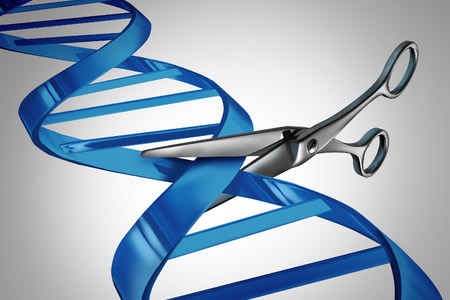Researchers from Temple University and the University of Pittsburgh have successfully removed HIV DNA from mice using the CRISPR-Cas9 gene editing tool.
Considerable advances have been made in the treatment of HIV using combination antiviral drug therapy to suppress replication of the virus. Those treatments have been shown to be effective at slowing the progression of the disease considerably. However, drug therapy is not a cure for HIV. If patients stop taking the drugs the disease will progress and develop into AIDS.
A permanent cure for HIV infection may still be some way off, although the latest study raises hopes of a permanent cure for the disease being developed.
The researchers spent several years conducting experiments which suggested HIV DNA could be removed from cells. The team were able to demonstrate this in vitro, but this is the first time the gene editing tool has been successfully used to remove HIV DNA in vivo.
The team’s proof-of-concept study showed that it is possible to stop HIV replication in vivo using CRISPR-Cas9 and eliminate the virus from animal cells. The team were able to reduce RNA expression of viral genes by 60% to 95%.
The study used three different animal models, demonstrating the effectiveness of the gene editing technique in the early stages of infection when the virus is actively replicating as well as in the latter stages in a model representing chronic infection. The team also showed CRISPR-Cas9 to be effective in a humanized mouse model where mice had human immune cells and a human form of the virus introduced.
CRISPR-Cas9 gene editing involves the introduction of guide RNA which binds to a specific section of DNA, in this case, HIV DNA inserted into the host genome by the virus. The Cas9 enzyme is then used to cut and remove specific sections of DNA.
The team used a recombinant adeno-associated viral (rAAV) vector delivery system. According to lead researcher, Wenhui Hu, MD, PhD, “The AAV-DJ/8 subtype combines multiple serotypes, giving us a broader range of cell targets for the delivery of our CRISPR/Cas9 system.”
CRISPR-Cas9 has been shown to be effective in mouse models, although no human trials using the technique have been conducted in the United States. The first human trial using CRISPR-Cas9 was performed in China late last year.
U.S trials involving the CRISPR-Cas9 gene editing tool could start soon, although only for the treatment of certain types of cancer. A federal advisory panel has approved the use of CRISPR-Cas9 for a cancer treatment trial, although it has yet to be approved by the Food and Drug Administration.
The researchers ultimately hope to conduct a human trial, although first they must demonstrate the effectiveness of the technique in a primate model, which more closely mimics human HIV infections.
The study was recently published in the journal Molecular Therapy.
